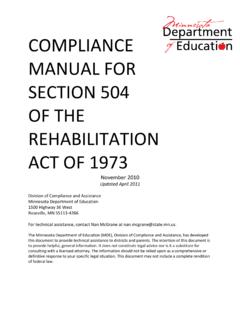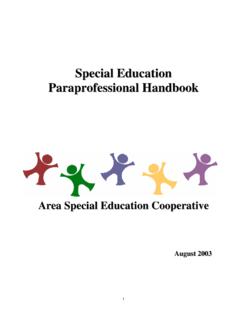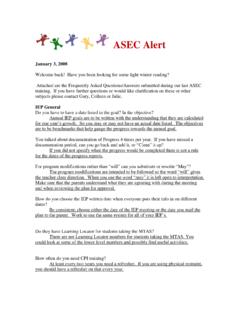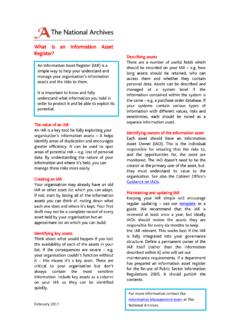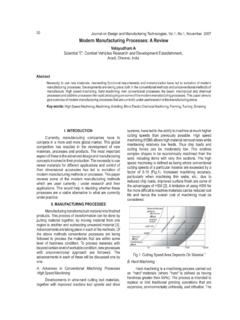Transcription of Introduction to Auditory Processing Disorders
1 Introduction to Auditory Processing Disorders Division of Special Education 2003. 1500 Highway 36 West Roseville, Minnesota 55113-4266. Acknowledgements APD Work Team Pat Brandstaetter Regional Low Incidence Facilitator/State Other Health Disabilities Consultant, Minnesota Department of Education Dr. Lisa Hunter Assistant Professor-Audiology, University of Minnesota Linda Kalweit Educational Audiologist, Duluth Public Schools Eric Kloos Low Incidence Supervisor, Minnesota Department of Education Sherry Landrud Itinerant and Early Childhood Deaf/Hard of Hearing, Program Facilitator, Intermediate District 287. Dr. Nancy W. Larson State Learning Disabilities Consultant, Minnesota Department of Education Amy Packer Educational Audiologist, Northeast Service Cooperative Deb Wall Special Education Director, Minnesota River Valley Special Education Cooperative In addition to the committee members, the Minnesota Department of Education would like to thank the following individuals for their invaluable assistance.
2 Bonnie Carlson Supervisor Special Education Monitoring, Minnesota Department of Education Dr. Cheryl Deconde Johnson Consultant, Colorado Department of Education Dr. Kris English Assistant Professor, Duquesne University Kitri Larson Kyllo Special Education Director, Gideon Pond Elementary Cindy Wetzell Educational Audiologist, Anoka - Hennepin Learning Center Introduction to Auditory Processing Disorders 2. Table of Contents Introduction to Auditory Processing Disorders 2003. Purpose Statement .. 4. General Definitions of Auditory Processing Disorders (APDs) .5. Behavioral Differences Between Auditory Processing Disorders and Attention Deficit Hyperactivity Disorder (ADHD) 6.
3 Special Education Evaluation of APDs .7. The Role of the Audiologist in the Assessment Process ..9. Auditory Processing Disorders Referral Procedure Flow Chart ..10. Auditory Processing Disorders : Five General Profiles .. 11. Resources ..14. Appendix A: ..17. American Speech-Language-Hearing Association (ASHA). Definitions of [Central Auditory Processing Disorders ] or Auditory Processing Disorders Appendix B: ..18. Guidelines for Classroom Management of Children with General Auditory Processing Problems Appendix C: ..19. Ideas for Developing Listening Behaviors for the Preschool Child Appendix D: ..20. Possible Audiological Tools for Screening and Evaluation of Auditory Processing Disorders Appendix E.
4 21. Information on Ordering Auditory Processing Screening Tools Introduction to Auditory Processing Disorders 3. Introduction to Auditory Processing Disorders : Guidelines for Evaluation & Program Development Purpose Statement The purpose of this document is to provide teams with the current definition of: Auditory Processing Disorders (APD), sometimes called central Auditory Processing Disorders (CAPD);. differentiate between APDs and other learning and attending problems in children;. describe the evaluation process in determining eligibility for special education when Auditory Processing Disorders are present;. the role of the audiologist and other team members in the evaluation process.
5 And offer some educational management and intervention strategies for educators of children who exhibit behaviors and characteristics of APDs. The development of this document arose to address the increase in awareness, interest, questions and referrals regarding APDs. New research has resulted in better identification and differentiation of students with APDs. Five APD profiles will be presented to describe a range of Auditory Processing problems by the symptoms presented, and specific instructional strategies designed to remediate those problems. Although Auditory Processing disorder is a clinical diagnosis, there are no standardized medical criteria to define it. However, it is the responsibility of educational teams to consider clinical diagnoses such as Auditory Processing disorder.
6 When making special education eligibility determinations, teams must follow existing state eligibility criteria. Generally, students with the presenting problems of APDs or a clinical diagnosis of APD. display severe academic and/or language deficits. Introduction to Auditory Processing Disorders 4. Evaluation & Program Development General Definitions of APDs Auditory Processing disorder, sometimes called a central Auditory Processing disorder, has been defined as: .. A central Auditory Processing disorder is not really a hearing impairment of reception and reduced hearing sensitivity. Instead, a central Auditory problem causes difficulty in understanding the meaning of incoming sounds.
7 Sounds get into the Auditory system, but the brain is unable to interpret efficiently or at all, the meaning of sounds .. in an extreme case, meaningful sounds can not be differentiated from nonmeaningful sounds." (Flexer,1994). The American Speech-Language-Hearing Association's (ASHA) definitions of Auditory Processing and (central ) Auditory Processing Disorders are provided in Appendix A of this document. These are currently accepted working definitions; however, there is new discussion that identifies this disorder as Auditory Processing Disorder (APD). This document will continue to describe this disorder as APD. Difficulty with Auditory Processing may be present and may or may not result in a student requiring special education service or 504 accommodations.
8 If students meet eligibility criteria for special education, it is typically within the disability categories of speech/language (language component) or specific learning disabilities (information Processing ). APDs are Disorders that impact language and information Processing . Also by definition, APDs are not the primary barrier to learning when other disabilities are present, such as hearing loss, cognitive impairments, and autism spectrum Disorders . Children under the age of seven cannot be evaluated comprehensively, as language and Auditory processes are still developing. Also, the presence of APDs cannot be legitimately evaluated when the child's primary language is not English.
9 As with all students being considered for special education, the team must consider the needs of the whole child. Refer to the Minnesota Department of Education Total Special Education System (TSES 2002) manual for eligibility criteria. The team may also refer to the information Processing section of the Minnesota SLD Companion Manual (1998). Introduction to Auditory Processing Disorders 5. Differences Between APDs and ADHD. Behavioral Differences Between Auditory Processing Disorders and Attention Deficit Hyperactivity Disorder There is a strong relationship between language, language development, Auditory skills (including listening), and attention. Therefore, identifying students with Auditory Processing Disorders may be difficult because similar behaviors are exhibited among students with attention deficit hyperactivity disorder (ADHD), hearing loss, or the presence of a specific learning disability.
10 The predominant behaviors characteristic of ADHD and APDs was studied by Chermak, Musiek, and Hall (1999). They reported that pediatricians and audiologists rank the prevalence of behaviors among children diagnosed with ADHD in a distinct manner from students' behaviors with Auditory Processing Disorders . The table below outlines their reported ranking. Comparison of Behaviors Demonstrated with Attention Deficit Hyperactivity Disorder and Auditory Processing Disorders in Frequency of Occurrence ADHD APDs 1. Inattentive 1. Difficulty hearing in background noise 2. Distracted 2. Difficulty following oral instructions 3. Hyperactive 3. Poor listening skills 4. Fidgety/restless 4.
